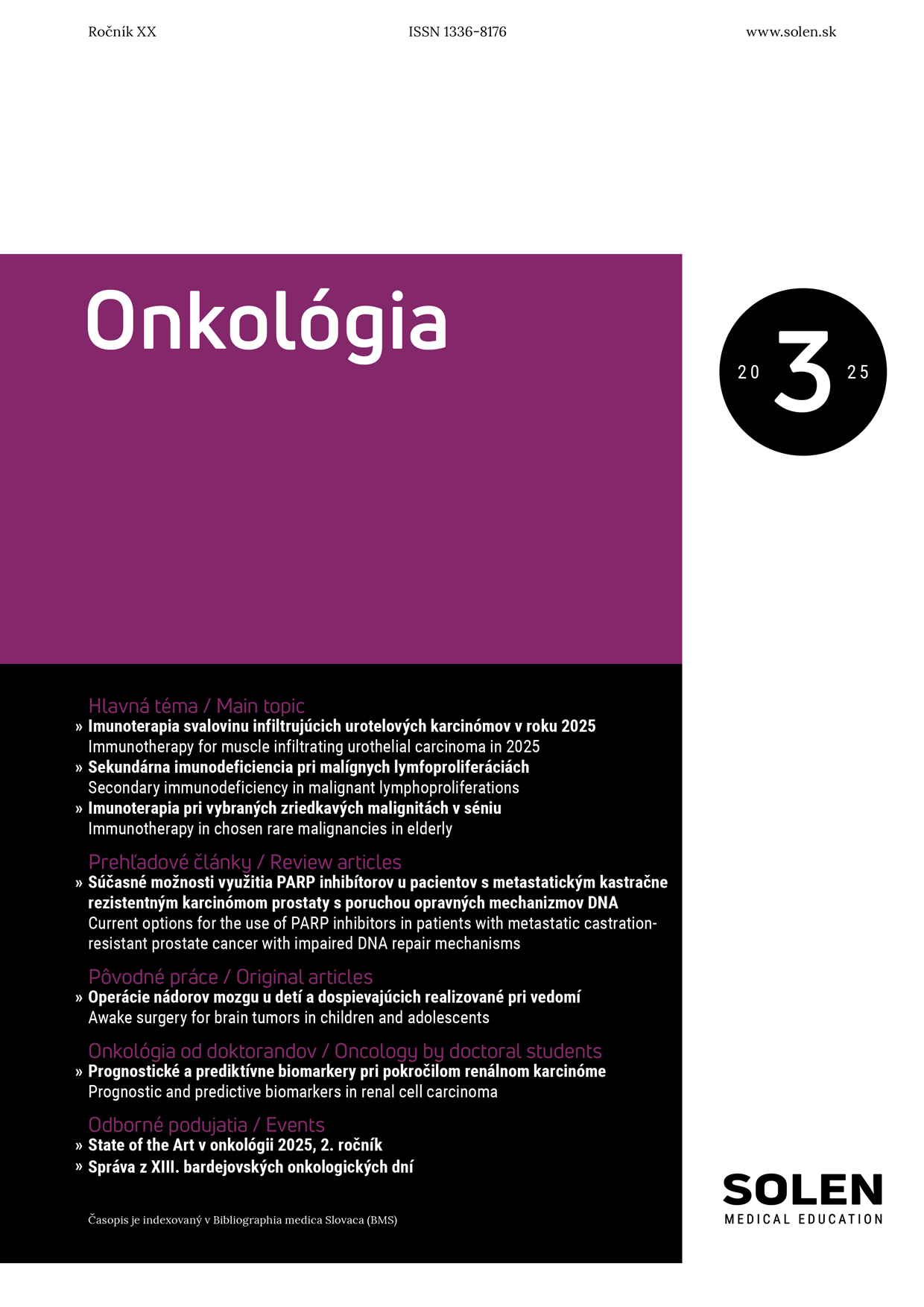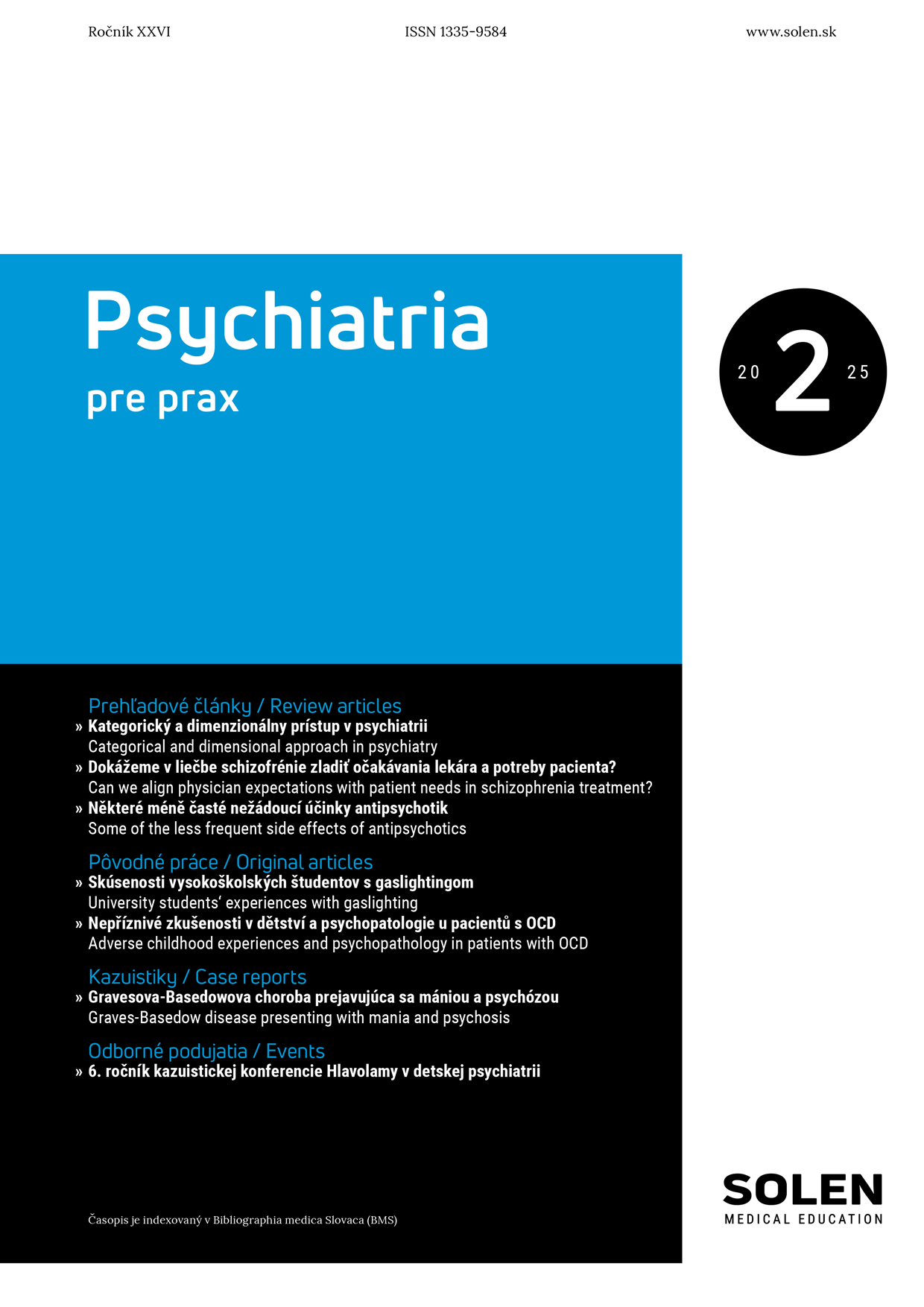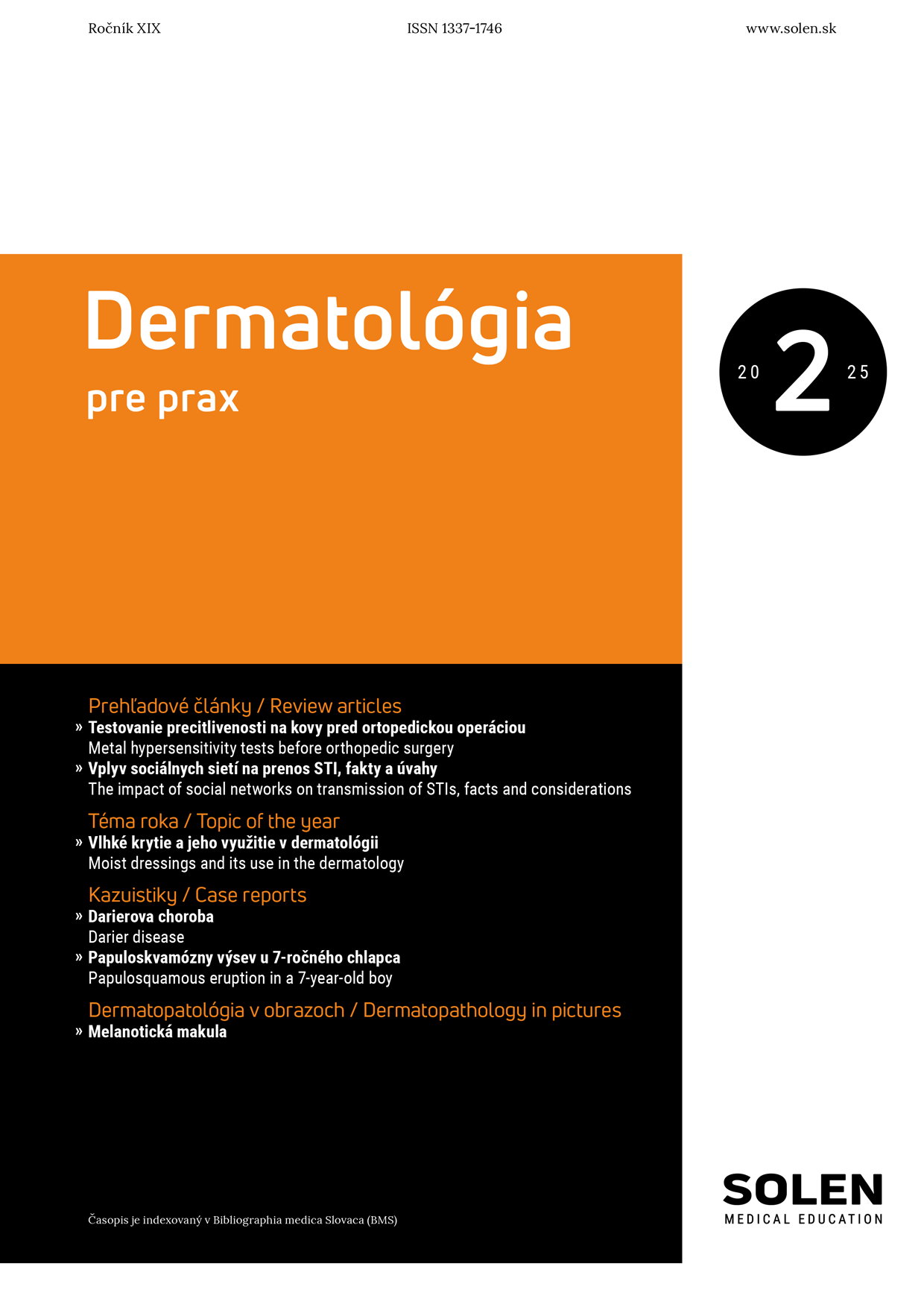Neurológia pre prax 4/2016
Glatiramer acetát a tři kazuistiky
MUDr. Pavel Ryška, Ph.D., doc. MUDr. Martin Vališ, Ph.D., MUDr. Zbyšek Pavelek
oztroušená skleróza je chronické zánětlivé demyelinizační a neurodegenerativní onemocnění postihující centrální nervový systém. Jedná se o onemocnění autoimunitní povahy, které je svými klinickými projevy značně heterogenní. Jeden ze základních léků první linie pro relaps/remitentní formu roztroušené sklerózy či klinicky izolovaný syndrom je glatiramer acetát (Copaxone). Tato práce popisuje mechanizmus účinku, indikace, použití a možné nežádoucí účinky glatiramer acetátu. Jsou prezentovány tři kazuistiky, na kterých jsou demonstrovány možné důvody k nasazení glatiramer acetátu.
Kľúčové slová: roztroušená skleróza, glatiramer acetát
Glatiramer acetate and three case reports
Multiple sclerosis is a chronic inflammatory demyelinating disease which affect central nervous system. This autoimmune disease manifests itself with various symptoms. Glatiramer acetate (Copaxone) is a drug of the the first line treatment for relaps/remitent type of multiple sclerosis or clinically isolated syndrome. This review explore the mechanism of action of glatiramer acetate in treatment of multiple sclerosis, its indication for treatment, use and possible side effects too. We report three cases from our own patients base through we demonstrate possible use of glatiramer acetate.
Keywords: multiple sclerosis, glatiramer acetate

















